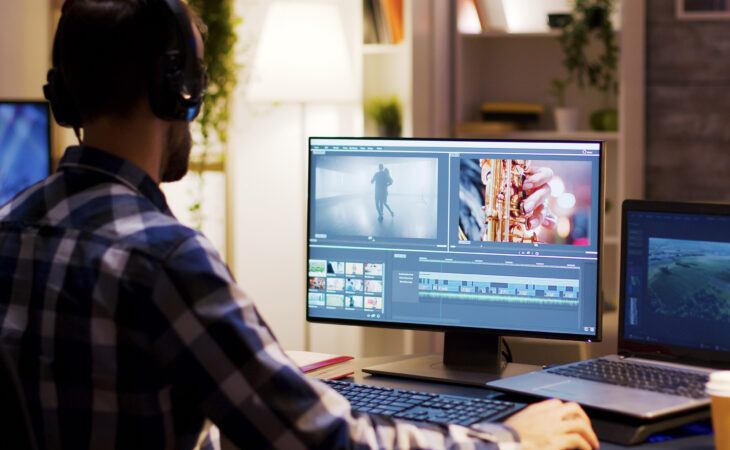
The world of artificial intelligence is rapidly evolving, and one of the most groundbreaking innovations in recent years is AI-driven video generation. While text-based large language models (LLMs) have already revolutionized content creation, a new generation of multimodal AI is enabling enterprises to generate high-quality videos from text prompts.
Leading AI research companies are pioneering the development of large-scale models that synthesize images, text, and motion into fully generated video content. This technology has the potential to disrupt content creation, marketing, education, and even entertainment, unlocking new possibilities for enterprises seeking scalable, AI-powered storytelling.
What is AI Video Generation?
AI video generation is the process of using artificial intelligence models, particularly LLMs and generative adversarial networks (GANs), to create high-quality videos from text descriptions, images, or other media inputs. These models leverage deep learning techniques to understand patterns in existing video data, enabling them to generate realistic motion, synchronize audio, and even animate static images. Unlike traditional video editing, which requires manual effort and specialized skills, AI-powered video generation automates complex production tasks, making content creation faster, scalable, and more accessible. These models operate in multimodal frameworks, integrating text, audio, and visual elements to create compelling video content.
How AI-Driven Video Generation Works
LLMs leverage deep learning architectures, such as generative adversarial networks (GANs) and diffusion models, to create video content. These models process textual descriptions and convert them into corresponding visual elements, incorporating motion synthesis, scene transitions, and realistic character animations. AI video generation platforms integrate multiple AI techniques, including:
By combining these technologies, AI-powered video-generation tools can produce high-quality, hyper-realistic videos that align with user-defined themes and narratives.
Techniques for AI Video Generation
At the core of this innovation is a multimodal large-scale AI model that can process text prompts and translate them into dynamic, high-fidelity video sequences. These AI models rely on a combination of deep learning techniques, including:
By combining these methodologies, enterprises can generate high-quality, context-aware videos that align with brand messaging, training materials, and customer engagement strategies.
Implementing AI-Driven Video Generation
To successfully integrate AI-driven video generation, organizations must adopt a structured approach:
1. Choosing the Right AI Video Generation Platform
Companies should evaluate platforms based on their needs. Factors to consider include:
2. Integrating AI with Existing Workflows
3. Ensuring Ethical AI Deployment
By following these steps, businesses can effectively incorporate AI-driven video generation into their workflows while maintaining quality and ethical considerations.
Use Cases
1. AI-Powered Personalized Marketing Videos
E-commerce and retail brands are leveraging AI-generated videos to create customized promotional content. For instance, AI-driven platforms can generate thousands of personalized video ads targeting different demographics, adjusting the messaging and visuals accordingly. This approach enhances customer engagement and conversion rates without the need for extensive manual editing.
2. Automated News Reporting & Content Summarization
News agencies are using AI to generate quick video summaries of breaking news. AI can analyze articles, extract key insights, and generate an engaging video news report within minutes. This capability enables media companies to deliver real-time content at scale, reducing dependency on human video editors.
3. AI-Generated Virtual Influencers & Avatars
Companies are increasingly using AI-generated influencers for brand collaborations. These AI avatars interact with audiences through social media, host virtual events, and even star in promotional videos, offering businesses a scalable and cost-effective alternative to traditional influencer marketing.
Industries and Jobs Impacted
1. Entertainment & Media
AI is revolutionizing content production by automating video creation for movies, trailers, and advertisements. Tasks that once required large production teams can now be executed by AI-driven tools, reducing costs and time.
2. Marketing & Advertising
Brands use AI-generated videos for personalized advertisements, explainer videos, and product showcases. AI-powered content allows companies to create multilingual campaigns and test multiple variations quickly.
3. E-learning & Training
Educational institutions and corporate training programs are leveraging AI-generated instructional videos to create engaging, interactive learning experiences. AI can generate realistic training simulations and virtual tutors for personalized learning.
4. Gaming & Virtual Reality
AI-powered video generation is redefining game development, enabling the creation of dynamic in-game cinematics and realistic virtual environments.
5. Real Estate & Architecture
AI-generated video walkthroughs and architectural visualizations enhance customer engagement, allowing potential buyers to explore properties virtually before making purchase decisions.
The Future of AI Video Generation
As AI models continue to evolve, enterprises should prepare for the next wave of innovation:
Our Perspective
At Equations Work, we recognize that AI-driven video generation is more than just a trend—it’s a paradigm shift in content creation. Our team is committed to helping businesses harness the potential of LLM-powered video generation through customized AI solutions. We specialize in:
As AI continues to redefine video content creation, Equations Work remains at the forefront, ensuring that businesses leverage AI responsibly and efficiently to drive growth and innovation.
AI-generated video content is no longer a futuristic concept – it’s here, and it’s revolutionizing how businesses create and distribute content. Want to explore how AI can optimize your video production pipeline? Book a free consultation today and take the first step toward AI-powered content creation!